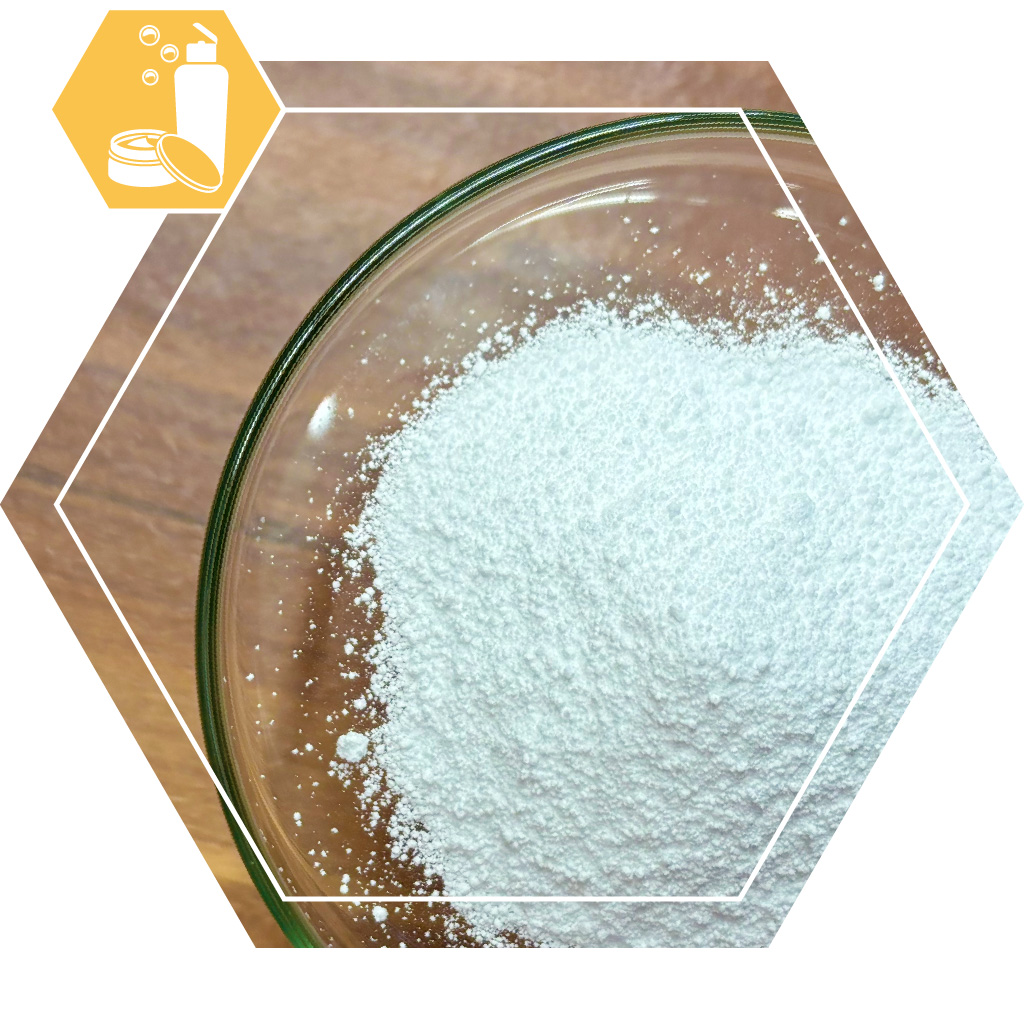Description
Potassium carbonate is an emulsifier and pH regulator for use in cosmetics.
Attention!
Please read all information below and the general product information before purchasing.
Not intended for use in food or other internal use.
Do not use undiluted on the skin: it is a raw material, not a finished product.
Use
Potassium carbonate, also called potash, is mainly used in cosmetics as an emulsifier. It is not an emulsifier itself, but it forms an emulsifier in combination with some other substances, such as stearic acid and fatty acids from beeswax.
You heat a solution of potassium carbonate in water with, for example, stearic acid. Continue heating for a while (up to 70 °C is usually sufficient), stirring well. A little soap is now formed, and this soap is the emulsifier with which you form the cream.
We use potassium carbonate in creams, among other things, as a substitute for borax, in which case use approximately 0,37 x the amount of borax. For example: the recipe states 0,7 g Borax, then use (0,7 x 0,37) = ± 0,26 g potassium carbonate. This only works if the borax was used as part of the emulsifier. Borax was also used as a preservative in very old recipes, so replacing it with potassium carbonate makes no sense in that case. Then use a suitable preservative. HexaCon 91 will be a good preservative in most cases.
Old-fashioned
Using potassium carbonate as an emulsifier is a very outdated application. We cannot recommend it, the creams have a pH higher than the skin and are therefore less skin-friendly than slightly acidic creams. The emulsifier cannot tolerate acid, which destroys the emulsifier. But it can be educational and interesting to be able to make old recipes and that is why we keep this material in the range.
Shaving soap often contains potassium carbonate, partly for saponifying fatty acids to form an emulsion, partly for softening beard hairs. The high pH is not a problem here, you wash the soap off after use.
Other uses
You can make a bath salt from it, the high pH can help soften the outer layer of the skin.
In other cosmetics, potassium carbonate is used to increase the pH.
Outside of cosmetics, it is a substance that you use for various things. Examples are as a cleaning agent, in darkroom recipes (such as the Pyrocat HD developer) and for wool dyeing. Unfortunately, we can provide limited advice on these uses.
Properties
Potassium carbonate is a white, fairly coarse powder at room temperature. It dissolves well in water and the pH of a 10% solution is approximately 12. The purity is at least 99%.
Sustainability
Potassium carbonate is extracted from potassium salts and chalk, minerals found throughout the earth. These minerals occur in large quantities, but they are not renewable. Once they are gone and it will take millions of years for them to be formed again.
It is hardly degradable, but that is not a real problem. Only a very high local concentration can cause harm, otherwise it is a completely harmless substance that occurs naturally almost everywhere.
Packaging
This substance is packaged in white plastic (PP) pots and buckets with lids.
Dangers
Potassium carbonate is classified as a hazardous substance, with the following characteristics:
WARNING
H315 - Causes skin irritation.
H319 - Causes serious eye irritation.
H335 - May cause respiratory irritation.
Codes
Item number: 13001
Dutch name: Kaliumcarbonaat
EC number: 209-529-3
EU CAS number: 584-08-7
CAS number TSCA: 584-08-7
INCI: POTASSIUM CARBONATE




